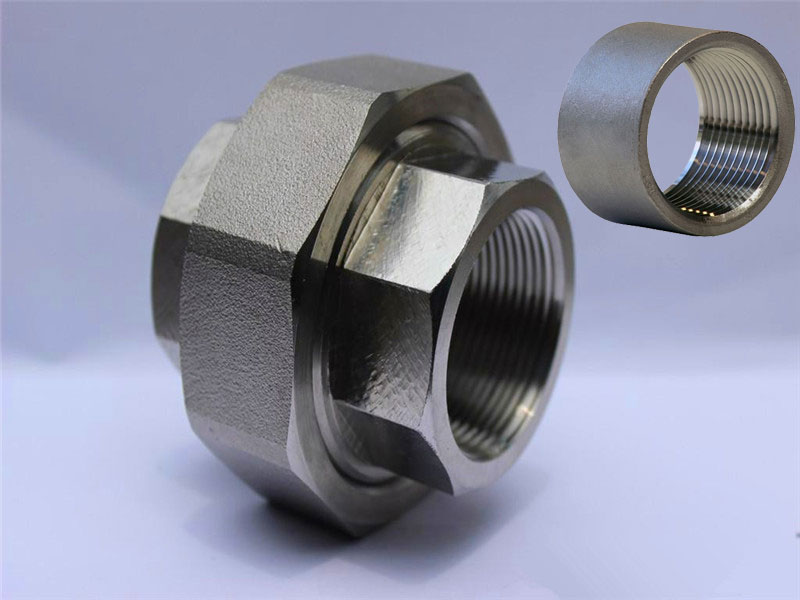The basic difference between a threaded union and threaded coupling is that threaded unions are made for joining and disassembling a part of a piping system such as a steam trap or control valve, etc for maintenance or replacement purpose. A coupling is used for joining pipe to pipe or pipe to a swedge.
Pipe Coupling and Unions are available in both types of forged fittings namely threaded and socket weld fittings. Pipe coupling are available in the form of Full Coupling, Half Coupling, and Reducing Coupling.
Couplings provide more robust joints in high-pressure applications whereas, in practice, unions are best suited to low-pressure applications.
More information of Pipe Unions:
- Materials: stainless steel, carbon steel, alloy steel, brass, etc.
- Connection Forms: threaded and socket welding connection.
- Manufacturing Standards: MSS SP 83, ASME B16.11.
- Types: there are different diameters and equal diameters of threaded unions.
- Product Link: SOCKET WELD COUPLING, SOCKET WELD UNION.
More information of Pipe Couplings:
- Materials: alloy steel, stainless steel, carbon steel, etc.
- Connection Methods: welding, socket, threaded connection, etc.
- Manufacturing Standards: ASME B16.11, BS 3799, GB/T14383, DIN2986, ASME B1.20.1, BS10241.
- Types: Full Coupling, Half Coupling, and Reducing Coupling.
- Product Link: THREADED COUPLING, THREADED UNION.
Pipe coupling is a lower-cost item and the union is a higher-cost item. When you need the ability to disassemble the piping for the removal of an item then you must use the higher-cost unions. When you are just joining pipe you would want to use the lowest cost item couplings.


 Venezuela
Venezuela Myanmar
Myanmar Sri Lanka
Sri Lanka Belgium
Belgium Czechia
Czechia Greece
Greece Mexico
Mexico Tobago
Tobago Brazil
Brazil Chile
Chile France
France Colombia
Colombia South Africa
South Africa Jordan
Jordan Spain
Spain Hong Kong
Hong Kong Netherlands
Netherlands Poland
Poland Bangladesh
Bangladesh Indonesia
Indonesia Taiwan
Taiwan Nigeria
Nigeria Iraq
Iraq Ukraine
Ukraine Romania
Romania Cyprus
Cyprus Angola
Angola Norway
Norway USA
USA Saudi Arabia
Saudi Arabia Kuwait
Kuwait Thailand
Thailand South Korea
South Korea Singapore
Singapore Malaysia
Malaysia UAE
UAE Germany
Germany Italy
Italy Costa Rica
Costa Rica Kazakhstan
Kazakhstan Philippines
Philippines China
China UK
UK India
India Japan
Japan Russia
Russia Canada
Canada Iran
Iran Turkey
Turkey Morocco
Morocco Egypt
Egypt Vietnam
Vietnam Oman
Oman Australia
Australia Qatar
Qatar Portugal
Portugal